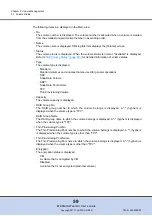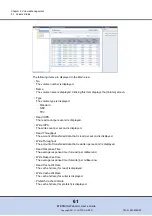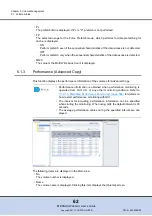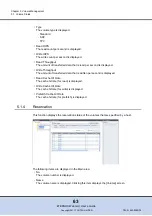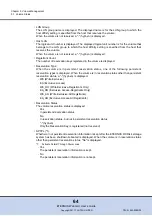
Chapter 5 Volume Management
5.2 Functions in the Action Area for Volume
ETERNUS Web GUI User’s Guide
72
Copyright 2011 FUJITSU LIMITED
P2X0-1090-02ENZ0
There are two methods to create a volume: automatic drive selection and manual drive selection.
■
Automatically selecting drives to create volumes
The procedure to create a volume by selecting drives automatically is as follows:
Procedure
1
Click [Create] in [Action].
2
Select "Automatic" for "RAID Group/TPP Selection".
3
Specify the volume detailed information, and click the [Create] button.
•
Name
Specify the volume name. An existing volume name cannot be specified. When
creating multiple volumes at the same time, the new volumes are named automatically.
Refer to
"Naming conventions for creating volumes" (page 617)
for details.
The following input condition applies:
-
1 - 16 alphanumeric characters and symbols (except ", (comma)" and "?")
•
Capacity
Specify the volume capacity and select the unit of capacity.
The following input conditions apply:
-
When creating Standard volumes or TPVs: 24MB - 128TB (numeric characters)
-
When creating SDPVs: 1GB - 2TB (numeric characters)
-
MB/GB/TB
•
Type
Specify the volume type. When the [Create Volume] function is selected from the RAID
group list, "Standard", "Snap Data Volume", or "Snap Data Pool Volume" is displayed.
When the [Create Volume] function is selected from the Thin Provisioning Pool list, only
"Thin Provisioning" is displayed.
-
Standard
Normal volumes that are created in the RAID group.
-
Thin Provisioning
Volumes that are created in Thin Provisioning Pools.
-
Snap Data Volume
Copy destination volumes for SnapOPC or .
•
If an area with the necessary capacity cannot be acquired from the free
space available, use the LUN Concatenation function to concatenate
multiple space into a volume.
•
Creating SDPVs in RAID groups with the same RAID type, drive type,
number of drives is recommended.
When creating an SDV, the capacity setting is not required. 24
(MB) + 0.1% of the copy source volume capacity is automatically
secured in the ETERNUS DX Disk storage system. When using
SnapOPC or , make sure to create an SDV and
SDPVs.


